Celebrated author and illustrator Phoebe Gloeckner was kind enough to stop by the AM 1700 studio this past Saturday night and talk with me for about an hour over bottles of Purple Gang Pilsner. Ostensibly, she was there to talk about her novel, The Diary of a Teenage Girl, and the film of the same name, which just recently came out to rave reviews, but we meandered around quite a bit, touching on everything from her early days in San Francisco, helping lay out the punk zine Search and Destroy, to the idea for a recurring Saturday Six Pack segment during which she’d interview other people’s mothers.
As Gloecker has been doing three or four interviews a day for the past month, I was a bit apprehensive going into it. I wanted, of course, to ask her about the film, and her book which spawned it, but I didn’t want to just ask the same questions she’d been hearing from everyone else. Hopefully, all things considered, I struck a pretty good balance between the things that one has to talk about when discussing The Diary of a Teenage Girl, and things not immediately relevant to the film, but still interesting… Just like everyone else, I asked her about the sexual relationship she had as a 15-year-old with her mother’s 35-year-old boyfriend. And, just like every other talk show host, I also asked why it was that she decided to tell the story of her youth by way of a fictional character – Minnie Goetz. But I’d like to think, in at least a few instances, we broke some new ground… and got into a few things that Terry Gross didn’t get into when she and Gloeckner spoke about the movie last week. While I think you’ll enjoy listening to the whole interview, here are a few scattered notes about things that stood out to me.
[If you would like to listen to episode twenty-five of The Saturday Six Pack, you can either download it from iTunes or scroll the bottom of the page, where you’ll find the Soundcloud file embedded.]
While Gloeckner said that, for the most part, the film rang true, there were a few things that she questioned. Most notably, she felt as though the bar scene near the beginning of the film, in which the character of Minnie sucks the finger of her mother’s boyfriend, didn’t feel right. Or, more to the point, wasn’t accurate. Minnie, she said, was a virgin at the time, who had never so much as kissed a boy. She wouldn’t have sucked her mother’s boyfriend’s finger and asked him to fuck her, she said. It just wouldn’t have happened. And, more to the point, it didn’t happen. We discussed why the film’s director, Marielle Heller, may have chosen to add this scene, which wasn’t in Gloeckner’s book. Was it to make the character of Monroe more sympathetic? Or was it introduced in order to give the character of Minnie more control over the situation than she actually had, helping drive the “empowered” young woman narrative that enthusiastic reviewers seem to be coming away with?
Gloecker, in other interviews, has referred to what happened between herself and her mother’s boyfriend as “sexual abuse,” but in both the novel and the film, it’s not spelled out in such clear terms. The character of her mother’s boyfriend, who we come to know as Monroe, isn’t portrayed as a manipulator, at least in any traditional sense. He’s portrayed more as a completely un-self-aware man-child. We see him at one point, laying on a couch, watching reruns of H.R. Pufnstuf, and carrying on a conversation with Minnie’s stepfather in which he keeps addressing his contemporary as “Sir.” Gloeckner again says that this wouldn’t have happened. Monroe wouldn’t have been watching H.R. Pufnstuf, she said. He would have been watching Sgt. Bilko. But, as we discuss, the art form demands that messages be conveyed quickly and succinctly, so cultural shorthand is employed. What works in a 300 page novel, it would seem, doesn’t work in a 90-minute film. And, to further complicate matters, Americans don’t appreciate complexity. They want happy endings. They want things tied up with a bow. So, in film version of The Diary of a Teenage Girl, we end with Minnie and her mother reconciling, when, in fact, Gloeckner says that it took quite a bit longer for them to rebuild their relationship. [I’m told Gloeckner’s mother attended a local screening of the film with her.]
With all of that said, Gloecker assures us that she’s very happy with the way the film turned out. While it may be true that some things didn’t feel true to her experience, and, if she’d made the film, it would have been much darker, she says that she understands Heller’s decisions. Heller, she reminds us, played Minnie in a stage production of The Diary of a Teenage Girl prior to writing the script for the film, and has a great deal of empathy for the character. “She wanted her to have a happy ending,” Gloeckner said. And, perhaps more importantly, Gloecker says that, despite these changes, the true core of the story, and the message that she was hoping to convey in the original novel, has remained intact. [After agreeing to let Heller make the movie, Gloeckenr talked to other authors who had seen their books developed into films. They all told her, she said, that the best she could hope for was not to be embarrassed. Thankfully, she says, she has something that she can be proud of, thanks to Heller, who put her life on hold for years in order to see this through to completion.] Here’s Gloeckner explaining how, after looking at initial drafts of the script, she decided to just trust in Heller’s vision and wait to see the finished product.
I found it interesting that, during the interview, Gloecker continually switched back and forth, sometimes indicating that things had happened to her, and sometime saying that they’d happened to Minnie. We talked quite a bit about the schitzophrenic nature of it all. We talked at length about her resistance until recently to say definitively that she is Minnie. She says her opinion hasn’t really changed, but that she’s just gotten tired of offering the more complicated explanation, which is essentially that Minnie is an every-girl who just happens to have survived experiences similar to those that she lived through. [It’s a novel, she would tell us, not a tell-all biography.]
When asked why she created Minnie, Gloeckner said that she hated herself as a kid, and didn’t feel as though she could write about that girl unless she created someone new, someone for whom she had more compassion. Ultimately, she created a character that she liked and wanted to hear from. “I wanted to give this little sprite a voice,” she said. And that’s what she did in her underground comics, which then evolved into books. Gloeckner also suggests that Minnie was created in part out of a sense of self-preservation. “Perhaps (I created her) in order to protect myself,” she said. “I had to, you know, in the process, distance myself from the character in order to see it differently.” At this point, we talked quite a bit about honesty and self-censorship. As she points out, she’s not alone in having survived a remarkably troubled childhood. I think the thing that makes her unique, though, is her willingness to accept it and share it openly without shame or judgment. “The worst enemy of an artist is self-censorship,” she says.
I asked Gloecker about the repeated references in the film to California heiress Patty Hearst, who was kidnapped in 1974 by a left-wing terrorist group calling itself the Symbionese Liberation Army. Gloeckner said she saw it as just another case of cultural shorthand, added by the filmmaker in order to convincingly convey the time period in which the film is set, as the search for the heiress-turned-bank robbing revolutionary was all over the news at the time. I pushed back a bit, saying that, if that’s all Heller wanted to convey, there were probably easier ways to go about it. I ask Gloeckner if it’s possible that Hearst is noted several times not just to set the time period, but to subtly introduce the idea that Minnie, like Hearst, could have been manipulated by a more powerful man into believing that she was in love.
Asked what scene rang most true in the film, Gloeckner noted the establishing shot at the very beginning of the film, in which Minnie strides confidently though Golden Gate Park, thinking to herself, “I just had sex.” Gloeckner says the scene, which reminds her of the opening scene in Saturday Night Fever, felt like a real memory. [She said the scene where Minnie took acid with Monroe also rang true, as did the scene where she and Monroe wrestled at the top of the staircase, only to stop when her mother came home.]
While Gloeckner appreciates that the underground comics she so loved as a kid, which propelled her into the career she now has, were hippy artifacts, she had little love for hippies as a young woman coming of age in San Francisco. “I hated hippies. I just had a horrible disdain for them.” So it’s not really much of a surprise that, when it came time to pick sides, she became a punk, embracing the energy of the punk movement completely. “This (was) an opportunity to fight,” she said. “This (was) an opportunity to get the aggression out.” [At some point, she references the fact that Minnie had other adventures as a punk, after we leave her at the end of The Diary of a Teenage Girl. Minnie, she said, moved into San Francisco’s storied Mabuhay Gardens, and eventually went to Europe, where she was “beaten up by Teddy Boys.”]
I ask if she’s bothered at all by the fact that so many discussions around both the book and the film have to do with her relationship with Monroe, when the film itself is more about a girl’s journey to find her artistic voice than it is about any single relationship. She says what bothers her more is that people focus on the 20-year age difference between her and Monroe. The age difference, she says, was not the thing that was really “screwy.” The troubling thing, she says, was the fact that she was having sex with her mother’s boyfriend.
[The above image of Gloecker, taken just after her interview with me, was taken by Chris Stranad for part of our Saturday Six Pack Portrait Project.]
We talked about how she came to know V. Vale, the publisher of Search and Destroy, who would later hire her to draw medical illustrations for his RE/Search reissue of The Atrocity Exhibition
by J.G. Ballard. Here’s what Gloeckner had to say about it.
“I was just a scraggly little punk, and Vale noticed me, and remembered me, and talked to me once, I think. His offices are on Romolo Street, right across from Mabuhay Gardens. So he just talked to me once. I was like 16. I was really young. I hadn’t done anything. But, at that time, the magazine was laid out by volunteers. So he invited me to one of the soirees where everyone stays up all night… all of the pages were on the living room floor… and we were just cutting and pasting blocks of text. Everyone did it for free. And I met a lot of people there. And I did that several times. And then he asked me to do a comic. So then they made a new tabloid called RE/Search… It was a tabloid before it was anything else… And I think I have comics in three or four of those also. Those were some of the first I published, I think. It was like, ‘punk kids at a punk club, and what they say.’ [Laughs.] But Vale and Andrea Juno
, who was his partner at the time, would always keep in touch. And, when they first got computers, they had me colorize some of their covers. And, finally, after I came back from graduate school, after having disappeared, they said they wanted me to do this Ballard book. And I was so excited. It was my first job out of school. And, in my head I thought, ‘I’ll get paid,’ you know? And I think I got like 100-bucks for probably 9 months of work. But I knew I had to do it, because, when I read the book, I realized that what Ballard was talking about was in some ways exactly what was in my head. And it was the reason why I had studied medical illustration. My comics always focused on the psychological and the emotional, but I always, since I was a little kid, wanted to know what’s going on in my body. My grandmother was a doctor and I used to read her surgical books. I felt almost out of balance, like if I didn’t know what it looked like if I swallowed a fly, or took a shit, or had sex… I wanted to know exactly what it looked like, and be able to feel it. And ht only way to do that was to see autopsies. See surgeries. To be in that kind of environment. Which is what graduate school offered. I didn’t want to be a doctor. Ballard had gone to medical school and dropped out. So that book spoke to me in a very direct way, and it was the first job I had out of school. And they said, “Just do whatever you want.” They didn’t give me one instruction. So it was like a dream job. Everything that had been in my head, I could just pull out.”
One of my favorite exchanges of the evening came during a discussion on how she’s come to meet legendary cartoonist R Crumb. Her mom, knowing that Phoebe loved the work of Crumb’s girlfriend Aline Kominsky, took her to see Crumb’s band, the Cheap Suit Serenaders, perform at a club in San Francisco. At some point, Gloeckner’s mother pulled her up to the stage to introduce her. Crumb, to the surprise of Phoebe, knew her by name, as Aline had mentioned her fan letters. Gloeckner’s mother would go on to date cartoonist Robert Armstrong, who performed with Crumb in the Cheap Suit Serenaders… “The Cheap Suit Serenaders would stay in our house when they played in the city,” said Gloeckner. “Once I copied a drawing of his in my sketchbook. And he actually slept in my room… I had to go sleep with my sister… and, months later, I looked in my sketchbook, and he’d drawn himself next to my copy of his drawing, and he was saying, ‘How dare you. I’ll sue!'”
We also talked about cartoonist Diane Noomin… I’d asked if it was possible that Minnie Goetz might have gotten her name in response to Noomin’s character DiDi Glitz. Gloeckner said she could see how I might think that, given the similarity, but explained the true origin of the name. “My mom was born Mary Lou, but my father started calling her Phoebe,” she said. “And, when I was born, they called me Phoebe. And, when I was growing up, that was very confusing, so people called me Little Phoebe, and her Big Phoebe. So ‘Minnie’ stands for Little Phoebe. And Goetz is a candy (company). (They make) a carmel chew… They’re my favorite candies.”
There was quite a bit more, but you should really just make some time and listen.
Next up was Amanda Uhle, the executive director of 826michigan, who came by to tell us that the Mittenfest festival would be returning to Ypsilanti this year after having left for Ann Arbor last winter. [For more information, see my post from just after Uhle made the announcement.]
And, lastly, our old friend the epidemiologist, Dr. Peter Larson, came in from Kenya to pick up where we left off the last time he dropped by for a visit. As promised, we talked quite a bit about mashed potato borne illnesses. We even called a young man with diarrhea and asked if he’d recently eaten any boiled potatoes that had been mashed by hand. [It’s complicated, but, according to Pete, it makes more sense from a public health perspective to tell people not to eat mashed potatoes than to tell them to wash the feces from their hands before mashing potatoes.] And, of course, Pete played some of the songs that he’s been sending into the show each week from Kenya. [If you like Pete’s stuff, be sure to come to Ypsi on Sunday, September 6th, when Pete will be playing a free show on the Washington Street porch of J.T. Garfield.] Here’s Pete telling us either about how he’d like to look more like Kate Bush, or about the time that a woman called the Kenyan anti-terrorism police on him for playing guitar in his apartment. [How punk rock is it to have your guitar playing classified as terrorism?]
Thanks, as always, to AM 1700 for hosting the show, Kate de Fuccio for documenting everything, and Brian Robb for running the board, keeping the bills paid, and the toilet paper stocked.
If you like this episode, check out our archive of past shows at iTunes. And do please leave a review if you have the time, OK? It’s nice to know that people are listening, and, unless you call in, that’s pretty much the only way we know.
AND NOW, THANKS TO SCIENCE, YOU CAN LSTEN FOR YOURSELF:

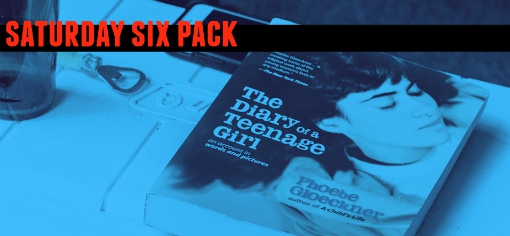
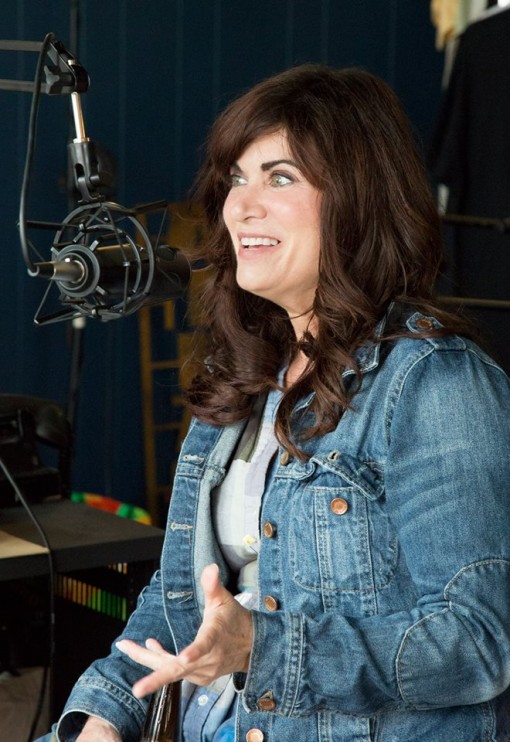
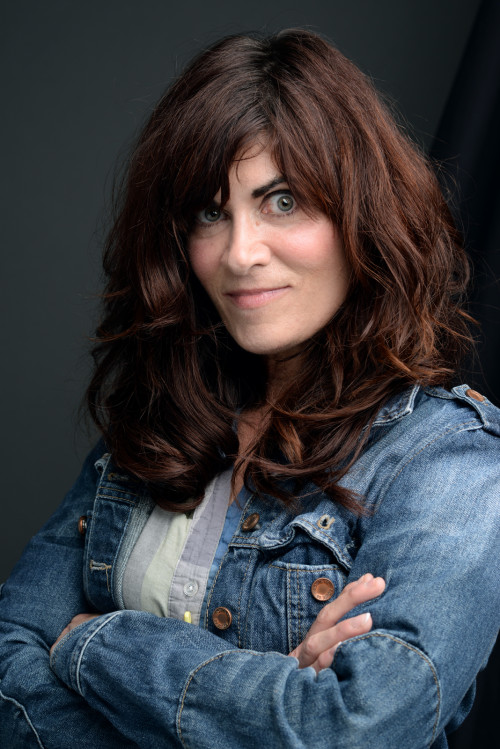
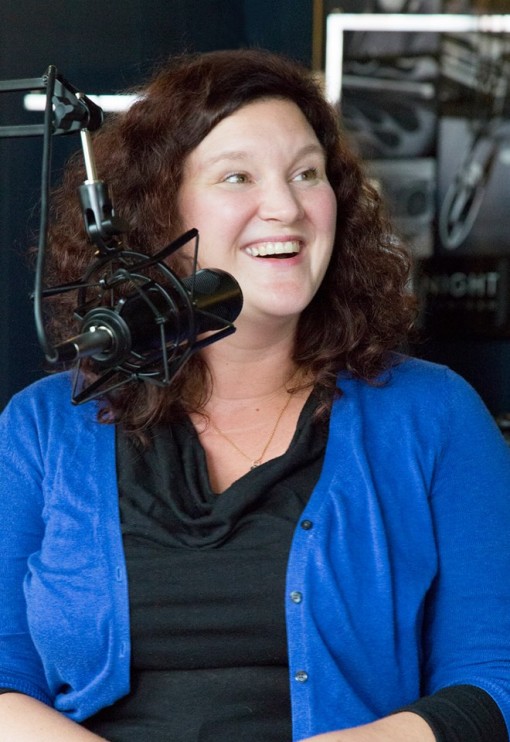
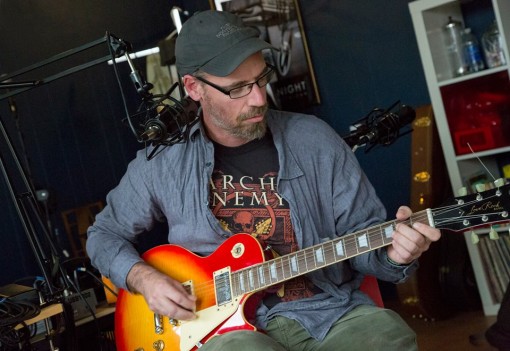







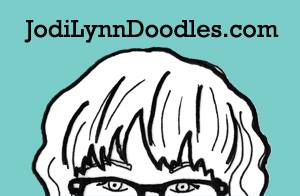



12 Comments
One more thing… I wanted to tell Gloeckner, while she was in the studio, something that I didn’t like about her book. It’s a small thing, but I’d always said that I would tell her if we ever met. And I didn’t. And I’ve been regretting it these past few days. So here goes… I didn’t like that she chose to call the man in her novel Monroe, as, every time I read his name, I was immediately reminded of the Jim J. Bullock character in Too Close for Comfort. I know that may sound like a trivial thing, but I found it really hard to get beyond the imagine Minnie Goetz in a relationship with a whacky, closeted neighbor.
Curiously, I seem to recall that Too Closer Comfort was also set in San Francisco.
I understood Gloeckner’s use of the third person when she was talking about Minnie’s life as it was shared in the book. I wasn’t expecting it, however, when she started talking about what Minnie did after the period of time covered in the book. That kind of threw me for a loop.
I don’t want to sound culturally insensitive but is it really the case that people in Aftica lack implements with which to mash their potatoes? If someone has a pot to boil a potato in, isn’t it likely that they’d also have a fork or a spoon? I can understand that they may not have access to soap and water to wash their hands, but I find it hard to believe that they don’t have something better than the hand they wipe with to mash their potatoes.
I’m happy for her that she liked how the movie turned out. I don’t think that I could have been so forgiving if it were me in her shoes though. If I would have gone in expecting to see a film about a psychologically abusive relationship that I’d been in with an older man who took my virginity, and saw a scene were I was sucking on his finger and asking him to fuck me, I think I would have exploded right on the stop. I understand what she’s saying about the big picture, but I couldn’t have taken it.
“I don’t want to sound culturally insensitive but is it really the case that people in Aftica lack implements with which to mash their potatoes? If someone has a pot to boil a potato in, isn’t it likely that they’d also have a fork or a spoon? I can understand that they may not have access to soap and water to wash their hands, but I find it hard to believe that they don’t have something better than the hand they wipe with to mash their potatoes.”
Africa is a big, big place. I can’t speak to the West but in East Africa, people generally mash potatoes their hands. Most people (including me in Kenya) eat with their hands so they don’t usually own forks or spoons. While a family will have a steel pot to cook stuff in, household implements are kept to a minimum. Most people have wooden spoons to cook soup and ugali (boiled corn meal), but anything made of steel is a fairly big expense.
Someone recently pointed out to me that in many parts of the West, people use machetes to cut grass, whereas in Kenya, people use an implement made specifically for that purpose. When I asked why people wouldn’t just take the implement from the East and transport the technology to the West, the response I got was that families would then have to buy two tools when they can really only afford one. Kenya is a much more affluent country than, say, Benin or Togo.
Regardless, mashed potatoes of various forms are often implicated in foodborne disease outbreaks as is hamburger. No matter what tools may be available, the simple fact is that people fuck up. They don’t wash their cutting boards, or half heartedly wash their hands after they shit so that when they do things like mash potatoes or make hamburger, they mix pathogens inside, where they happily reproduce or evade being cooked to death (which is why some states have banned rare cooked meats).
“[It’s complicated, but, according to Pete, it makes more sense from a public health perspective to tell people not to eat mashed potatoes than to tell them to wash the feces from their hands before mashing potatoes.]”
This is true. No matter how well intended one might be, the simple fact is that people often don’t do what they are supposed to, particularly when it doesn’t directly impact them. I would never eat mashed potatoes in a restaurant. I love to eat very rare burgers, but am always aware that I’m taking a serious risk by doing so. Some states have banned rare cooked meats. They were right to do so.
Someone making minimum wage in a shitty restaurant can’t really be trusted to follow all of the rules all of the time.
I will buy Phoebe’s book and never eat mashed potatoes again.
It’s amazing what a difference talent makes. People live through traumatic experiences all of the time. Many of them end up turning the experience into a free flight to NY and a ten minute spot on the Maury Povich show. Gloeckner, being super smart, was able to spin it into a career.
Soiree is the correct spelling, not suaree. It was jarring to read that bit.
Sorry to have upset you, JB.
Hmmmm. Interview– I think Phoebe’s career, for which she has trained extensively and broadly and which reflects a life-long diligent art practice, is more than the result of spinning her childhood trauma. She had a career before this book and she’ll have one long after. Many people with trauma surround us, working happily away, leading productive, fulfilling lives. Phoebe chose to tell Minnie’s story for all of those people. And perhaps for herself, too. She’s worked hard and has massive talent and integrity. She has earned her success just like other people do.
I’m sure that’s what you meant to say.
One Trackback
[…] I was just talking with author Phoebe Gloeckner not too long ago about her experience as a young punk of about 16 working for V Vale at Search and Destroy, and how influential that experience was for her, and it’s interesting to think that maybe, at […]